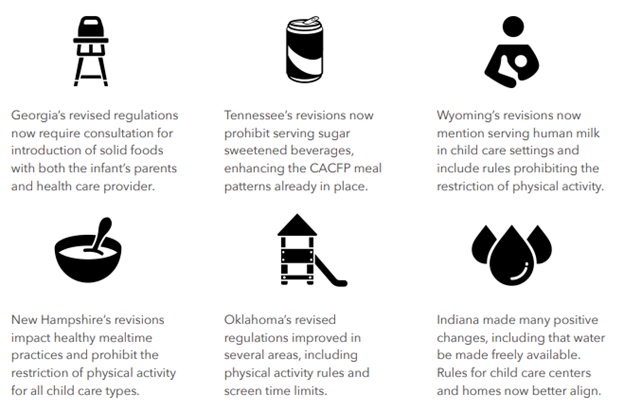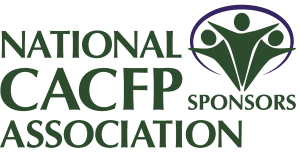CACFP Important Factor for Obesity Prevention
December 6, 2023

The University of Colorado College of Nursing published their 2022 Annual Report on Achieving a State of Healthy Weight. The report:
- Determines how state regulations support obesity prevention in licensed ECE programs.
- Highlights state successes
- Identifies opportunities for ECE regulations to improve support of obesity prevention in young children.
Why It Matters
Pediatric overweight and obesity continues to be a public health crisis in the United States with 1 in 5 children and adolescents considered obese and higher rates in children from low-income families and children from Black, Native American, and Hispanic Populations. Approximately 25% of 2-5 year old children are overweight or obese. Obesity often persists through adolescents.
New studies described how the COVID-19 pandemic has negatively impacted and increased childhood obesity rates across age groups. Preventive interventions in early childhood are crucial for creating behaviors that support healthy weight practices.
State Practices
This report describes the degree to which the 50 states and the District of Columbia have included the 47 evidence-based High-Impact Obesity Prevention Standards (HIOPS) into licensing regulations for Child Care Centers and Family Child Care Homes.
Seven states (Georgia, Idaho, Indiana, New Hampshire, Oklahoma, Tennessee, and Wyoming) have made changes that impact the HIOPS in one or more licensed child care types (center, large home, or small home).

Nationally, HIOPS is supported by licensing regulations in:
- 64% of Child Care Centers
- 58% of Large Family Child Care Homes
- 55% of Small Family Child Care Homes
The most supported HIOPS are:
- Provide children with space for play
- Make water available inside and outside
- Serve small-sized, age-appropriate portions
The least supported HIOPS are:
- Limit oils and avoid fried foods
- Limit salt by avoiding salty foods
- Provide staff orientation and training opportunities for physical activity
States with the most improved support of the HIOPS are:
- DC
- Florida
- Tennessee
- Nevada
- Texas
- Vermont
States with the fewest amount of change across child care types are:
- Massachusetts
- South Dakota
- Pennsylvania
CACFP Important Factor for Obesity Prevention
Some states explicitly cite CACFP meal patterns in their child care licensing regulations for at least one licensed care type, regardless of whether the program formally participates in CACFP.

Strategies to Strengthen Obesity Prevention Policies and Practices
- Maintain past improvements to state child care regulations that support obesity prevention in ECE.
- Adopt regulations that explicitly align with CACFP meal patterns.
- Adopt regulations consistent with standards for physical activity and screen time.
- Adopt regulations that support obesity prevention practices in centers and home-based care types.
- Consult with local public health officials or licensed child health providers during the revision process.
For more information, read 2022 Annual Report: Achieving a State of Healthy Weight. The study was published in the University of Colorado College of Nursing.
